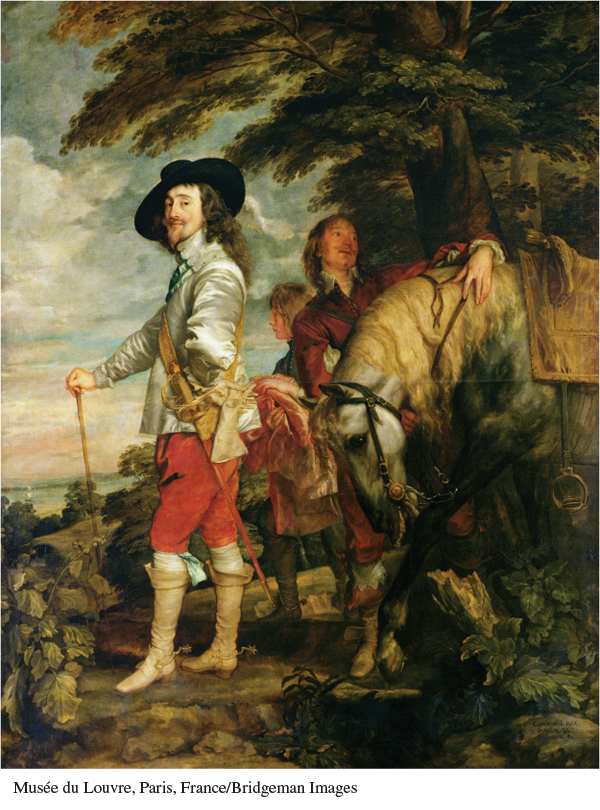A History of Western Society: Printed Page 492
A History of Western Society, Value Edition: Printed Page 477
A History of Western Society, Concise Edition: Printed Page 493
Religious Divides and Civil War
In 1588 Queen Elizabeth I of England (r. 1558–1603) exercised very great personal power; by 1689 the English monarchy was severely circumscribed. A rare female monarch, Elizabeth was able to maintain control over her realm in part by refusing to marry and submit to a husband. She was immensely popular with her people, but left no immediate heir to continue her legacy.
In 1603 Elizabeth’s Scottish cousin James Stuart succeeded her as James I (r. 1603–1625). Like Louis XIV, James believed that a monarch has a divine right to his authority and is responsible only to God. James went so far as to lecture the House of Commons: “There are no privileges and immunities which can stand against a divinely appointed King.” Such a view ran directly counter to the long-

Religious issues also embittered relations between the king and the House of Commons. In the early seventeenth century many English people felt dissatisfied with the Church of England established by Henry VIII (r. 1509–1547). Calvinist Puritans wanted to take the Reformation further by “purifying” the Anglican Church of Roman Catholic elements — elaborate vestments and ceremonials, bishops, and even the giving and wearing of wedding rings.

James I responded to such ideas by declaring, “No bishop, no king.” For James, bishops were among the chief supporters of the throne. His son and successor, Charles I, further antagonized religious sentiments by marrying a French princess and supporting the heavy-
Charles avoided addressing grievances against him by refusing to call Parliament into session from 1629 to 1640. Instead, he financed his government through extraordinary stopgap levies considered illegal by most English people. However, when Scottish Calvinists revolted against his religious policies, Charles was forced to summon Parliament to obtain funds for an army to put down the revolt. Accordingly, this Parliament, called the “Long Parliament” because it sat from 1640 to 1660, enacted legislation that limited the power of the monarch, and made government without Parliament impossible.
In 1641 the Parliament passed the Triennial Act, which compelled the king to summon Parliament every three years. The Commons impeached Archbishop Laud and then threatened to abolish bishops. King Charles, fearful of a Scottish invasion — the original reason for summoning Parliament — reluctantly accepted these measures.
The next act in the conflict was precipitated by the outbreak of rebellion in Ireland, where English governors and landlords had long exploited the people. In 1641 the Catholic gentry of Ireland led an uprising in response to a feared invasion by anti-

Without an army, Charles I could neither come to terms with the Scots nor respond to the Irish rebellion. After a failed attempt to arrest parliamentary leaders, Charles left London for the north of England, where he began to raise an army. In response, Parliament formed its own army, the New Model Army, composed of the militia of the city of London and country squires with business connections. During the spring of 1642 both sides prepared for war. In July a linen weaver became the first casualty of the civil war during a skirmish between royal and parliamentary forces in Manchester.
The English civil war (1642–1649) pitted the power of the king against that of the Parliament. After three years of fighting, Parliament’s New Model Army defeated the king’s armies at the Battles of Naseby and Langport in the summer of 1645. Charles, though, refused to concede defeat. Both sides jockeyed for position, waiting for a decisive event. This arrived in the form of the army under the leadership of Oliver Cromwell, a member of the House of Commons and a devout Puritan. In 1647 Cromwell’s forces captured the king and dismissed anti-